Golden Giant: the Houston Express
- Jorge A. Zajia

- Sep 24, 2022
- 5 min read
Back in the early 2010s, while I was taking a break from collecting airplane models, I spent a fair amount of time taking aircraft pictures at Houston’s Bush Intercontinental Airport (IAH) – The fact that pressing the camera shooter was free made plane spotting an attractive alternative to collecting, especially as a student.

While not having a large presence in the airfield, Atlas Air jumbos have always been a constant at IAH. I remember one time I was looking towards the east cargo complex from the parking garages when I saw an Atlas 747-400 wearing a special livery, with smaller titles and gold replacing the blue elements of their standard livery. I didn’t think much of it, and when on a subsequent visit to the airport I saw another Atlas 747-400 wearing the same special livery I thought that they were updating their image across the entire fleet. But shortly afterward I realized that it wasn't a change of image, but rather a way to differentiate those two particular 747s from the rest of their fleet. By then I had also noticed that, unlike most of the other Atlas 747s, these were passenger aircraft instead of freighters. However, it was not until a friend from Miami became particularly excited when one of these jumbos visited MIA for maintenance that I started to dig deeper to find out what kind of operation was Atlas using these golden 747s for, and what made them special.

As it turned out, these golden jumbos were dedicated to the Houston Express route; a triweekly link between Houston and Luanda (LAD) operated for SonAir (the defunct airline division of Angola’s oil company Sonangol). These 747s had a low-density configuration of only 189 seats, with most of them belonging to some sort of premium class. Tickets on these flights could only be purchased by oil companies for their executives and other employees needing a direct link between Texas and Angola. In the last year of service, however, the flight was opened to the general public in an attempt to keep it alive after the oil price plummeted in 2015, and with it the demand on the route.
After learning about the exclusivity that surrounded these two birds my interest in them sparked. But even though these aircraft served as a nice backdrop for many IAH pictures when they were resting at their usual spot in the east cargo complex, their infrequent schedule made it difficult to come across them in action and up close. However, one lucky Sunday afternoon on April 1, 2012, I smiled as I saw one of these golden 747s – N322SG – on final for runway 27 inbound from LAD. I was conveniently taking pictures from the terminal D garage (international arrivals terminal), so I was able to get a close look as the aircraft docked and got unloaded. Below are some pictures of that day, but you can see a larger set here.
In 2017, both United Airlines and Delta Air Lines retired their 747-400s. This left the Houston Express holding the title of being the last regularly scheduled passenger airline service using N-registered 747s. The Points Guy featured a thorough trip report on the last Houston Express IAH-LAD flight, which took place on March 28, 2018.
The last time I remember seeing one of Atlas’s golden 747s was on March 23, 2018; only 5 days before the last Houston Express flight. Ironically, that day I was at IAH photographing the last KLM 747 flight to Houston, as the airline was retiring the type from the AMS-IAH-AMS route. At the time, the ending of the Houston Express also represented the last scheduled passenger service using 747s out of Houston. After that, however, British Airways and Lufthansa reintroduced their jumbos on their flights to IAH, with the latter operating a daily 747-8I from FRA as of the writing of this article.

Fast forward a few years and now I’m back into collecting aircraft models. During my hiatus from collecting one of these golden 747s, N263SG, was released in 1:400 scale. As is the case with these scale models, it was a limited edition run and shortly after it was released it was no longer available for purchase from regular retailers anymore. Luckily for me, the model does show up on the second-hand market with some frequency at relatively fair prices. For the longest time, however, there was an unwritten rule in my collecting criteria: if I have spotted certain aircraft, I do not need a scale model of it. One notable exception was Lufthansa’s A380 D-AIMB, the first A380 that visited Houston, and the first A380 that I saw in person (and photographed), but that is a topic that deserves a whole article on its own. The point is that I let the 1:400 model of N263SG pass many times because, even though it wasn’t the exact tail number, I had gotten a good set of photos of its sister ship, N377SG.
But with time everything evolves and changes, and today I can no longer just go to the airport and catch the Houston Express golden jumbos with my camera. Another thing that has changed is my collecting criteria, I am now more open to allowing modern and contemporary aircraft in my collection, which means that aircraft that I have spotted are unavoidably going to find their way into my display shelves in the form of a scale replica sooner or later. In fact, having spotted an aircraft is starting to become an excellent reason to get a scale model of it. Because of this, I stopped letting N263SG pass by and acquired it at a collection sale in which it popped up recently. Replicas of N263SG were actually released by two 1:400 scale model brands: Flight Line 400 (today integrated into JC Wings), and Phoenix Models. Mine is a Flight Line 400 example, which is the nicer of the two molds, but has a noticeably too bright shade of gold applied to the livery.
After I got the model, I decided to go through my files and see if I had any pictures of N263SG. I did find a series of pictures from a close encounter that I had with it at IAH on June 3, 2012, only about two months after my encounter with sistership N322SG. Unfortunately, the light was not in my favor the day I came across N263SG, but once again with time things have changed, and the historical value that these pictures have gained in a decade help to make up for the otherwise less than ideal quality. That day N263SG was probably being ferried somewhere because it departed straight from the east cargo complex instead of the passenger terminal, and it rotated in no time out of runway 15L, indicating that it was very lightly loaded.

Besides the Houston Express route, N322SG and N263SG also were chartered to fly a variety of entities and personalities ranging from artists, politicians (most notably former UK Prime Minister David Cameron), sports teams, and essentially anyone willing and able to foot the bill.
To put an end to my Houston Express story I leave you with a fun personal anecdote. Shortly after I received my 1:400 model of N263SG I also upgraded my camera of more than 10 years. So, the main set of pictures that you see of the model in this article, and the pictures of the real aircraft were taken with two different cameras. However, because when I first unboxed the model I still had my old camera in service, I did end up capturing the model through the same viewfinder that I used to capture the real thing some 10 years earlier.

Happy collecting and happy planespotting!
Jorge A. Zajia





















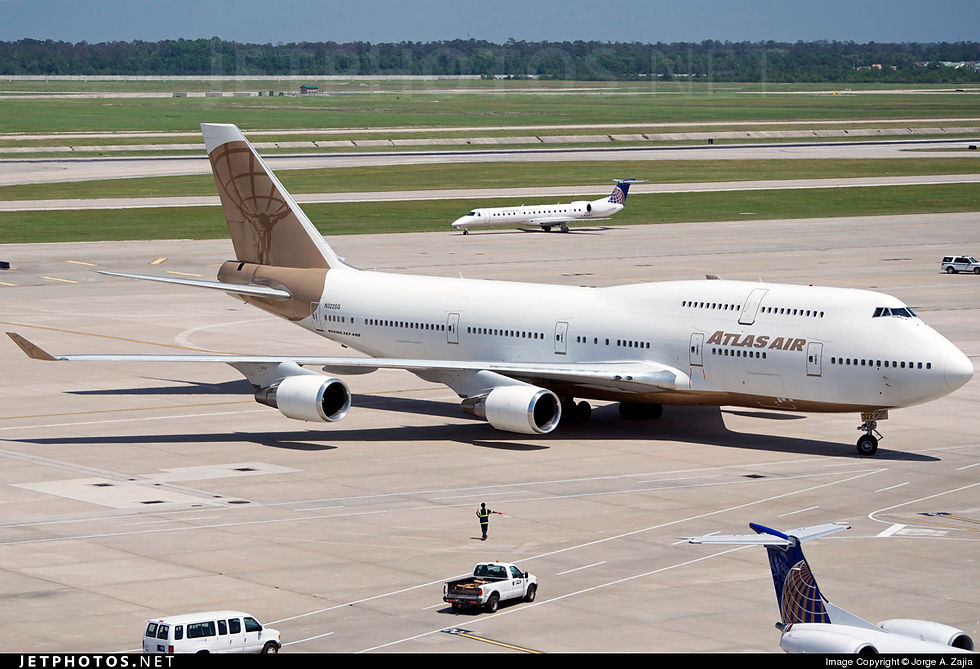














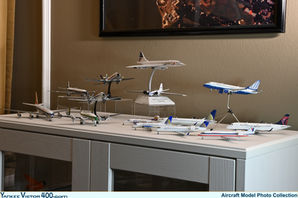
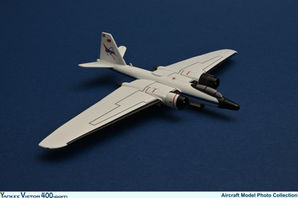


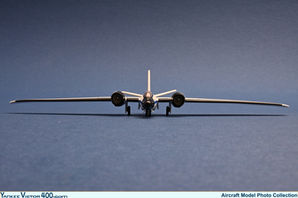




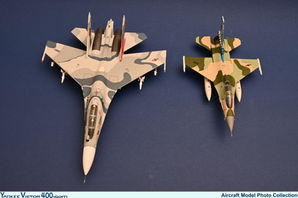

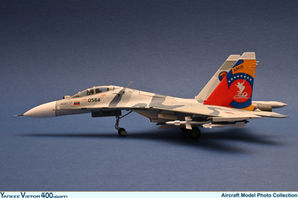










Comments